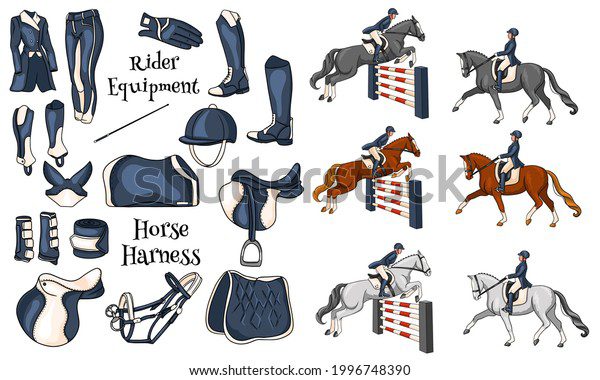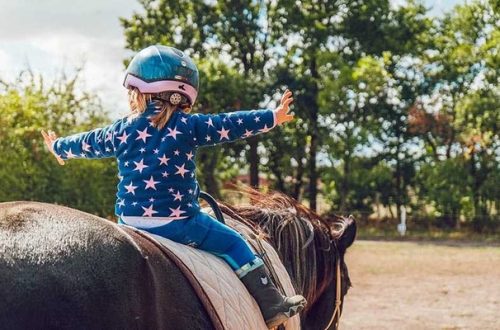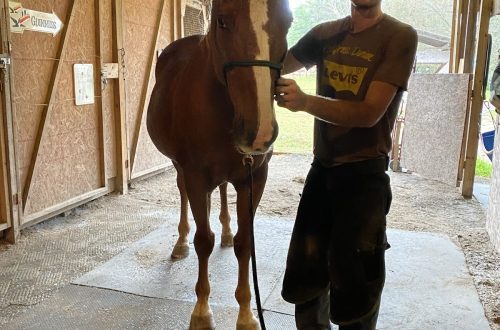
Ammunition for horse and rider
All riding equipment can be divided into three groups:
- horse controls
- horse protection equipment
- means to ensure the most comfortable and correct position of the rider on the horse
Horse controls
Bridle
To control the horse, the features of the structure of its jaws are used. A snaffle (bit) is inserted into the region of the toothless edge of the jaw, consisting of a bit and two metal rings. The impact of the bite on the tongue, jaw and lips of the horse makes it possible to control his head, neck and shoulders, slow down and stop the movement.
In order for the pressure of the metal bit on the horse’s mouth not to be painful, the snaffle iron is made thick enough. Thicker snaffles are less painful to the horse’s mouth and are therefore called less severe. Thin bits are called more stringent. Such bits should not be used on horses with a soft (i.e. very sensitive) mouth. Strict bits are used for hard-nosed horses that have poorly developed mouth sensitivity.
There are different designs of bits, but the bit always consists of two or three parts. Otherwise, the horse can easily bite the bit – grab it with his teeth, and then he will no longer obey the rider. Reins are used to transmit commands through the bit to the rider. The left and right reins are attached to the snaffle rings with buckles. The reins are made of leather or braid.
The headband consists of a system of straps: two cheek straps, an occipital (occipital), forehead, chin, portable (brazen) capsule. In various designs of bridles, certain belts may be absent.
The rein, bit and headband together make up the bridle.
Martingale
A martingale is sometimes fastened to the bridle. This is the name of a device that prevents horses that lift their heads very high from raising it above a certain level. If the horse lifts its head, it is difficult to control it, and if it throws its head back, it can hit the rider with the back of the head. One end of the martingale is attached to the girth of the saddle; reins are freely passed through the rings of the other two. When teaching horseback riding, auxiliary means of controlling a horse are used: a whip, spurs, a cord and a scourge.
Whip
This is a fairly flexible rod 50-70 cm long and 1 cm thick. A cracker is attached to the end of the whip to soften the blow. Sitting on a horse, the whip is held in the right hand lowered down. With a soft touch of the whip to the side of the horse, the rider indicates to her that she did not fulfill his request. For many horses, the feel of the whip in the rider’s hand is sufficient. But when the horse gets out of control, the whip is used for punishment. Once or twice the rider hits the side of the horse with the whip.
Showing cruelty to a horse, beating it is strictly prohibited. A rider who beats a horse is removed from the competition. He may even be deprived of sports titles and the possibility of further communication with horses. The concepts of “cruelty” and “demanding” should not be confused. In the friendship of real people, the combination of mutual respect and exactingness leads to an understanding of each other. And in relations with animals, it is necessary to learn how to combine affection with the ability to persistently demand from them obedience and obedience to the will of man. No need to curry favor with the horse, expecting her good disposition for this. It is best to do without a whip at all. The Englishman James Phyllis, the author of the famous book Basics of Dressage and Riding, said this very well in the last century: “Once I am in the saddle, the whip is off. A real rider needs a leg and a rein. The bad – the whip.
Spurs
One of the most important means of controlling a riding horse is the rider’s legs. The inner side of the legs from the heel to the knee is called the leg. In order to increase the impact of the legs on the sides of the horse, people have long begun to make spurs of various designs and different lengths. Whoever didn’t wear them: bogatyrs, knights, musketeers, Cossacks, hussars, ulans, cavalry guards, dragoons, horse guards … Currently, athletes most often have spherical spurs and spurs with a smooth burdock.
Spurs with a wheel are prohibited – they can easily injure the sides of the animal. A novice rider cannot use spurs: he can not only spoil, but even cripple a horse, but he will not learn how to ride it correctly.
Cord
When taming a horse, teaching it to jump, dressage techniques, and also during its warm-up, they use a cord – a braided smooth ribbon 10 – 15 m long and 4 cm wide. At one end there is a belt fastened with a buckle, and at the other – a loop long about 20 cm. When the cord is applied during the warm-up of the horse in the arena, the athlete fastens the cord to the right or left snaffle ring and moves away from the animal for several meters, loosening the cord tape. He then slips one hand into the loop while the other adjusts the tension on the cord. Well-drilled horses move in a circle at any gait, obeying the commands of the athlete, loudly and clearly pronounced aloud: “Step!”, “Lynx!”, “Gallop!”. When moving the horse to the left, the cord is held in the left hand, when moving to the right – in the right.
Beach
To regulate the movement of young, lazy and naughty animals on the lunge, when teaching horses to jump over obstacles and the main elements of dressage, a whip is used. It is not so difficult to make it yourself: you need an elastic stick of light wood 1,5 m long for the handle and a drummer 3 m long woven from thin straps, securely attached to the handle.
Horse protection
To protect the horse from hypothermia, a blanket is used, and to prevent injuries during training and competition – bandages, boots and rubber hoods.
Blanket
It is used when transporting horses, a sharp drop in temperature in the stable, to protect a hot horse and to warm a sick one. It is usually made of woolen fabric and fastened to the horse’s body with the help of fasteners.
Bandages
Special cotton bandages are used to bind the horse’s legs. They protect tendons and ligaments from sprains.
Buttocks
To avoid bruises and other injuries to the horse’s legs, leather boots are often placed over the bandages over the pasterns. On the leg, the boot is fastened or laced up.
Rubber holsters
To protect the rims of the legs from notches (abrasions and wounds when hit with a hoof or shoeing one leg on the rim of the other while the horse is moving), rubber hoods are pulled over the hooves
- MarK 19 September 2014 of
I’m looking for a forum admin in pm. he does not work. Answer
- Iluha 27 September 2014 of
thanks Reply
 Dmitry’s love November 16 2016 city
Dmitry’s love November 16 2016 citybells are of interest so that the horse does not slip along the knurled road are there such? slippery and you have to go. not forged. and we don’t want to. Answer





